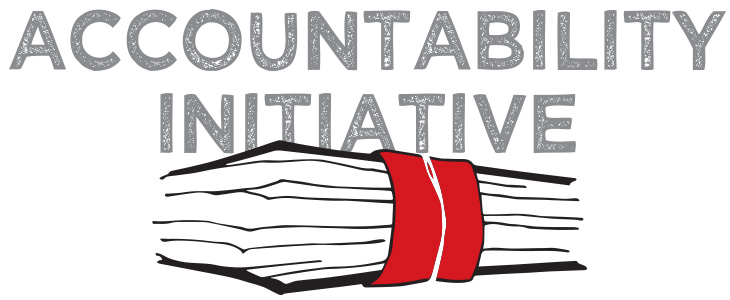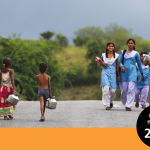
Evaluating outcomes in Jawahar Navodaya Vidyalayas
24 July 2012
Headlines that declare: “Navodaya Vidyalayas help the poor”, in addition to those that celebrate the success achieved by Navodaya students in national examinations, such as the UPSC Civil Services Examination, and the IIT Joint Entrance Examination, seem to seal the popular appraisal of the central government’s Jawahar Navodaya Vidyalaya Scheme as one that is successful. Whereas the average school-wide rate of passing in the school-leaving board examination is 80.64% in schools across the country, it is 90.11% (i) in Navodaya Vidyalayas. What is touted as the greatest success of Navodaya schools, however, is the fact that they facilitate the above-mentioned success “to serve the objective of excellence coupled with (those of) equity and social justice”, by affording the acquisition of quality education to rural students (with a focus on girl children, and students belonging to Scheduled Castes and Tribes), who may have otherwise been unable to partake in it. This blog argues that the current method for the evaluation of Navodaya Vidyalayas, which sheds positive light on their functioning and educational provision, is not comprehensive in terms of its analysis.
Founded via the National Policy on Education 1986, Navodaya Vidyalayas are fully residential schools, established in each of 595 districts of India with the aim of “[identifying] and [developing] (the faculties of) talented, bright, and gifted children, predominantly from rural areas, who are denied good educational opportunities.” As of 2007, they had 1,80,391 students on their rolls (ii) (0.005% of an estimated total 40 million in secondary schools over the country), and received 41% of the total central government outlay on secondary education (as of 2003) (iii).This is indicative of the importance attached to these Vidyalayas, and of the high infrastructural (and educational) standards to which they are held. For example, each Navodaya Vidyalaya is required to:
- Maintain a campus that is at least 30 acres in area (iv) and is constructed at a cost of Rs. 2.3 crore;
- Possess hostel facilities (for 250 boys and girls), a fully stocked library, computer lab, and playing field;
- Facilitate (among students) the development of a reasonable level of competence in 3 languages—English, Hindi, and a regional language—as envisaged under the “3 language formula” (v)
In comparison, the quintessential Indian secondary school is devoid of any ICT training (over 85% of rural secondary schools do not even have a computer on their premises(vi)), and is plagued by rampant teacher absenteeism(vii) It is also unable to ensure the acquisition of reading skills (in one language), at a 2nd grade level, in over 27% of 7th grade, and over 20% of 8th grade student(viii) .Thus, a Navodaya Vidyalaya can be considered as being relatively rich in its means, and ambitious in its outcomes.
Hence, were these Vidyalayas to be evaluated for their performance in terms of a scale, which utilizes resource-provision, and performance in examinations, as its sole gauges—as is often done in monitoring and evaluation activities conducted under the purview of educational schemes in India (e.g. in the 15th and 184th report of the HRD to the Rajya Sabha)—(then,) these schools could be considered as triumphant examples of effective educational delivery. However, prior to reaching a decisive conclusion in favour of Navodaya Vidyalayas, it is imperative to refer back to the original objective of the scheme(ix) and to determine whether a solely input and exam-driven approach for its evaluation is able to exhaustively assess its success/failure.
As I see it, the intended objectives of Navodaya schools are twofold: the first, to do with the identification of the “deserving” rural population, and the second, to do with the provision of quality education (to those identified). The above-mentioned approach for evaluating the Navodaya scheme fails in engaging with these intended objectives in two easily discernible ways: 1. By discounting from its purview the process used for determining admission into a Navodaya Vidyalaya and; 2. By assessing the quality of education as a function of the inputs that are injected into schools, and of the marks yielded at the close of such education, rather than of the processes involved in its administration.
In this blog, I am not hoping to offer an evaluation of the Navodaya Vidyalaya scheme, but merely to propose an expansion of the criteria used in any such evaluation, in order to make it more inclusive and reflective of reality. In determining the constituents of such criteria, I adopt the idea that forms the basis of Yamini Iyer’s blog (x) (entitled“Breaking out of the Input Trap”), which challenges the notion that guideline-driven expenditures (including those on infrastructure) are the be-all and end-all of educational delivery.
Identification of rural students:
- The Navodaya Admission test: The admission test is designed without any verbal components, in order to be equitable, and offer a fair chance of admission to any student who appears in it. However, it has been contended that the mental ability, arithmetic, and language sections of this test render it as being akin to one testing IQ, biased towards those students who attend elite rural schools (xi). Any evaluation of the Navodaya scheme is incomplete without a parallel evaluation of these claims, as the design of the admission test, were it to be in tandem with the notions of social justice that inform the Navodaya scheme, would be based in an ideology of neutrality (and not one of bias.)
- Other admission criteria (age): The UNESCO estimates that the gross enrollment ratio in primary schools in India is 106%, and the net enrollment ratio is 88% (xii). The gap between the two is representative of the sector of the population that is attending a primary institution despite not belonging to the “official primary school-going age” (6 -12 yrs). Given that any student who is admitted to a Navodaya Vidyalaya is required to be between the ages of 9 and 13 years, those who experience a break in their education are ineligible for admission. If an evaluation of the inclusivity of the scheme is to be made, it is important to consider the desired nature of such inclusivity and whether the current admission criteria (based on age) fulfills it.
Quality of education:
- How much do the students learn—in the library/computer lab/on the field? Learning outcomes are usually hard to measure, particularly because they are hard to quantify. That being said, the Annual Survey of Education Report (2011) makes a beginning at attempting to measure these outcomes, by checking for rural children’s level of language acquisition/their ability to perform arithmetic problems, etc. Given that different reports have periodically made a mention of the fact that the “3 language formula” associated with NVs is largely targeted towards the acquisition of writing skills, and does not aid the development of proficiency in spoken/understood language (xiii) it will be useful to employ strategies parallel to those employed in ASER to determine the actual state of learning in these schools. This would involve an assessment of exam scores, coupled with surveys of reading/speaking skills (and more.)
- Involvement of local stakeholders in the process of decision-making: It has been found that the decentralization of school administration, and the greater involvement of parents, can help control teacher absenteeism(xiv) and improve learning outcomes (such as language acquisition). Moreover, local communities are better able to perceive (and act on) the needs of a school, and have the most to gain from its proper functioning (xv). The Charter of the Navodaya Vidyalaya recognizes the importance of the involvement of local communities in the improvement of educational services/quality, and requires that parents and community members be a part of the Navodaya Vidyalaya Management Committees, constituted at a district level to oversee the functioning of a school. An evaluation of the nature/extent of parent/community involvement would give an indirect indication of the quality of services and education associated with a Navodaya Vidyalaya. Additionally, collaboration with these committees could also aid the overall evaluation of a Navodaya Vidyalaya with respect to the above-mentioned factors.
- Teachers: The National Policy on Education, as well as the Indian Education Commission, has identified the teacher as amongst the most significant contributors to the quality of education. The monitoring of teacher training activities conducted under the Navodaya Vidyalaya scheme, should, thus form an important element of evaluation of the quality of education.
An extension: Do Navodaya Vidyalayas serve as a seat for empowerment?
The Navodaya Vidyalaya scheme is overt in its pursuit of the objectives of social justice (in addition to those of excellence). Implicit in the philosophy behind these Vidyalayas is the desire to support the empowerment of the students—who form the core of their beneficiaries. A class I recently took, in the context of women’s empowerment, revealed to me that empowerment comes with (and could potentially be defined by) the ability to critically reflect on one’s own life and to express discontent with the state of things, prior to forging a mechanism to change them. While delving deeper into the issue of empowerment would make for a blog post of its own, it is useful to mention that an evaluation of whether Navodaya Vidyalayas provide the requisite environment would entail a comprehensive qualitative assessment centered on students(xvi).
Conclusion:
An expansion of the criteria on which to base the evaluation of NVs, to include the above-mentioned (and any additional) components, will enable the analysis of the functioning of the scheme on which to base one’s judgment of its effectiveness in achieving intended objectives. Such an evaluation would help inform not only the scheme itself, but also the broader spectrum of secondary schools in India. Since the Navodaya Vidyalayas are also hubs for “improving quality of education through sharing of experience”, conducting the evaluation would, in itself, be a fulfillment of one of its intended goals.





